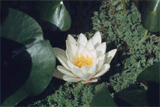| Comune: | Siena |

Records of an Orto dei Semplici, annexed to the hospital of Santa Maria della Scala, used for the cultivation of plants with curative properties, date back to as early as the beginning of the 17th century. In 1784 it was transformed, by order of grand-duke Pierre Léopold of Tuscany, into a University Botanical Garden and, almost a century later, in 1856, was moved because of the need to extend a piece of land at the Physiocrats Academy. The size and current layout are the result of work done by the various directors of the garden down the ages. In 1860 it was enlarged and equipped with new features such as a hothouse for the cultivation of exotic plants. In 1964, the extension was doubled and, in addition, new buildings were put up for the university institutes, which incorporated a 19th-century coldhouse. The garden, which covers roughly two and a half hectares, is near Porta Tufi and is entered through a gate, added in 1866, embellished with two pools containing aquatic plants. The sloping garden divides into three distinct parts. The first, known as "the school", is a series of artificial terraces divided into rectangular flower-beds with herbs used for medicinal purposes, in perfumery and in cooking. The second, set on a slightly lower level, has trees and shrubs both of the exotic variety (of the kind able to withstand the local climate, namely quince, pomegranate and jujube), and those native to central and southern Tuscany. This section of the garden also has a collection of gymnosperms. The lowest of the three levels, called the podere has an artificial terrace on its upper part where exotic potted plants are displayed in summer. A recently created fernery and rock garden is used to display some rarely seen Tuscan plants. In remaining part, where an attempt has been made to recreate the appearance the terrain within the walls would once have had, fruit plants are grown that are now the subject of research work. Tropical plants, such as orchids, ferns and agaves, are placed in the late 19th-century hothouse. The tepidarium is used to protect plants found in semi-desert regions, such as American cacti and African euphorbia.

